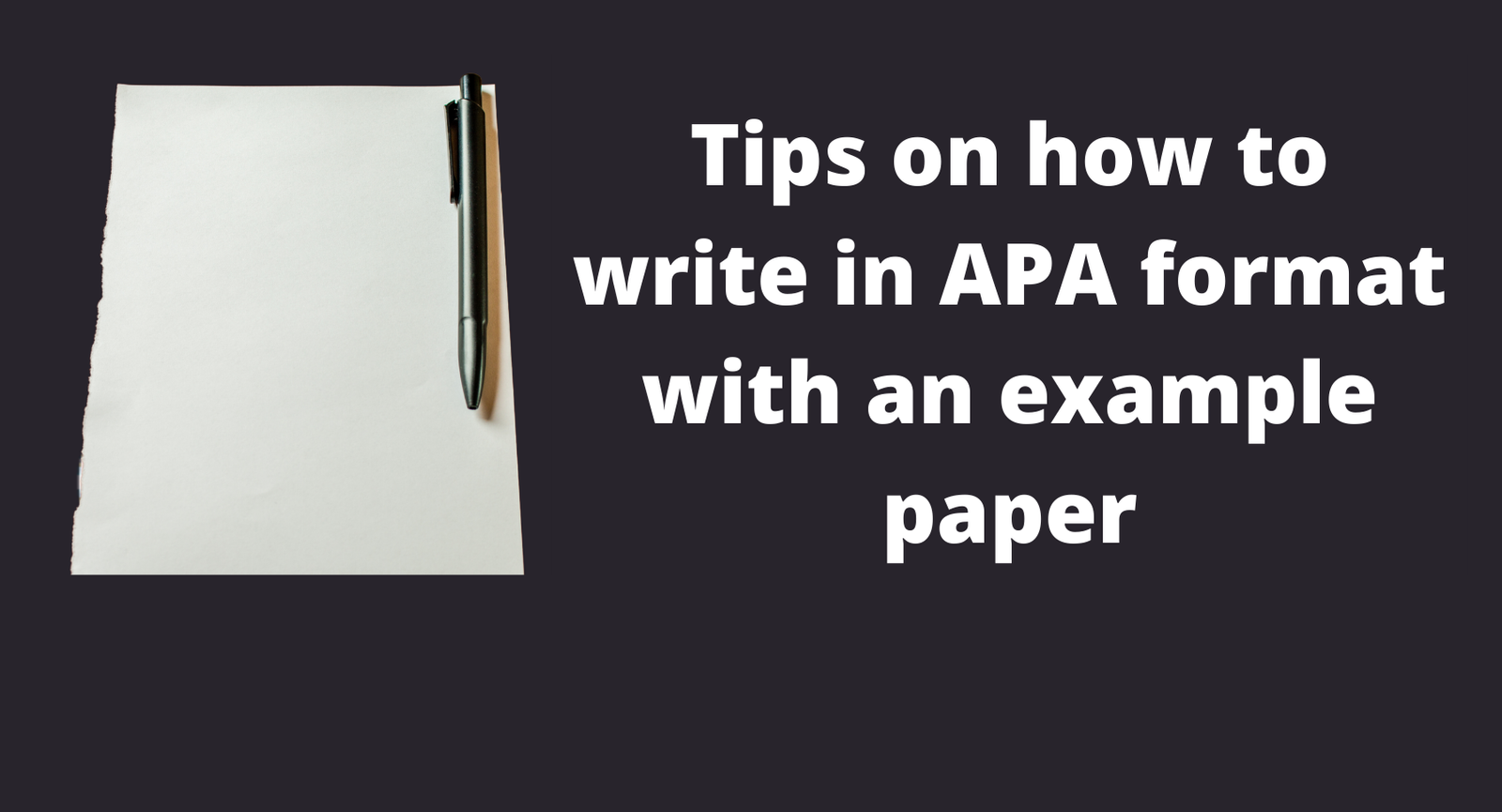Students and authors who have to write things on a daily basis must know the differences among writing formats. However, there are multiple writing formats such as APA, MLA, Chicago, Turabian, IEEE, etc. Although among all these, the APA format is the most used because it is more convincing and easy to understand. Students usually combine formats and styles of writing. However, both are different. There are four writing styles that define what the author wants us to understand, but the writing format is the structure of writing that defines the delegacy and efficiency of writing.
Every writing format has a different structure and needs proper guidance to achieve that writing structure in a specific format. Let’s discuss the APA format because it is the most used and common in students and authors. APA format comes to life in 1929 by the American Psychological Association (APA), where it explains the reader about the author’s information. It is compulsory that a reader must know whose article or books he’s reading because this is the term of ethics and credibility. In this format, the author’s last name and the article’s publication date are mentioned so that the reader reads authentic and new information according to the dates of the articles. It helps in sourcing and avoids plagiarism attacks because providing accurate citation increases the reader’s faith that he’s reading credible information. Whether information is directed quoted or taken from the source, it is ethically correct to provide a citation.
Here are some tips that could be used to write in APA paper formatting.
- In APA format, all text should be double-spaced
- The title should be in the center to represent the topic of an article
- One-inch margins on all sides
- Every paragraph in the body should be indented
- For the normal font, 12 points are used. For Thus, fording one, it should be
- Every page should have a number on it at the upper right-hand corner
- One space is used after most punctuation marks, as the manual recommended
- “Running head,” which is the shortest version of the title, should be placed in the upper left-hand corner
APA format is used in scientific topics, and several behavioral and social sciences companies use this standard and guidelines for writing formats. Behavioral sciences study includes psychology, cognitive science, and neuroscience. In addition, social sciences study also focuses on particular aspects of human behavior, most likely to be social and cultural relationships. Social science studies include sociology, anthropology, economics, political science, human geography, archaeology, and linguistics.
APA format has many editions, but the 7th edition is the most capable and vigorous for use because it’s the latest version with multiple features. It has 12 sections compared to 8 sections of the 6th edition. This latest version has the guidance with accessibility in mind, offers the latest examples to demonstrates, and has updated guidelines. The features discussed in the APA format include a cover page, font, running heads, pronouns, bias-free language guidelines, spacing after sentences, tables and figures, in-text citation, citing books, using DOIs (DOIs number should be formatted as a URL), Using URLs, and new citing information.
This all is not as easy and short as it looked. These all have multiple guidelines in each feature. Let’s explain each feature in detail.
The cover page should include all the following details of paper title, student name, affiliation (school, department, etc.), course number and title, course instructor, and due date.
Abstract: for research pages, abstract use to define the shortest summary of the article, which is also included in the APA format.
Paraphrasing: Authors paraphrasing to ignore the plagiarism in their content, which is allowed in the APA format.
Fonts also have categories, and APA format has cleared it all 12-pt Times New Roman, 11-pt Calibri, Arial, Georgia, and 10-pt Lucida, Sans Unicode, Computer Modern.
Running heads are the short titles that are not required for student papers but professionals. Before paper title/head “Running Head” do not include, for example:
6th edition: Running Head: APA FORMAT
7th edition: APA FORMAT
Pronouns: “he” or “she” is not applicable to use in writing, which means only the third form is used, “They” as a gender-neutral pronoun.
Bias-free language guidelines: in this section, new guidelines are updated, and new sections address involvement in socioeconomic status, intersectionality, and research.
Spacing after sentences: in the new guidelines of the 7th edition, it is clear that the citing format has now been streamlined, which means tables and figures must include a name and number above the table and figure or below the table and figure, that is called footnotes.
APA 7 Updates: Although the 7th edition is already updated, it brings new guidelines updation with it where more new features are introduced for advanced usage.
In-text citation: some books have more than two authors, so we shortened the referencing name by using “et al.” after the first name when referencing the APA format. Parentheticals are used in the citation.
6th edition: (Rechard, Murphy, Shawn 2018)
7th edition: (Rechard et al., 2018)
Citing books: in the 7th edition, there is no need to mention the format like (Murphy, etc.). But the DOIs number should be formatted as a URL.
Annotated bibliography: if the reader is for it, then authors have to implement it, and these annotations must be short and not exceeding from one paragraph.
Using URLs or bibliography: Lastly, the URLs are used for more precise and legal citation.
Hence, the APA format is the most commonly used by the psychology, education or social sciences related articles because its features define the regularity of the article and provide a better understanding to readers. In addition, it has completed guidelines for use in an academic paper. The title page, abstract, main body, and references are the main terms that must be in the paper if it is in APA format.




